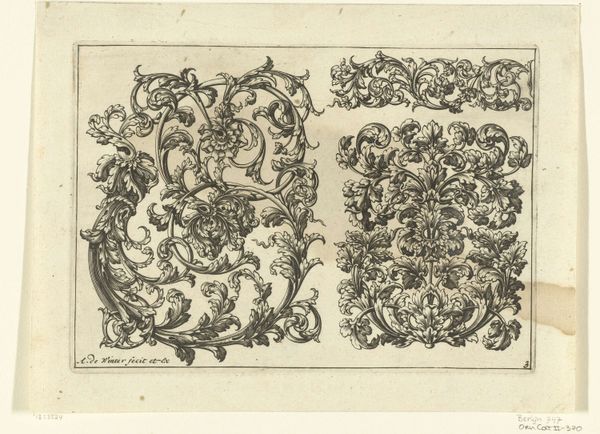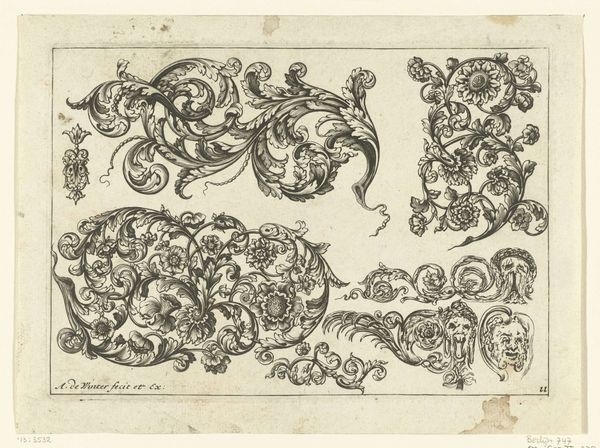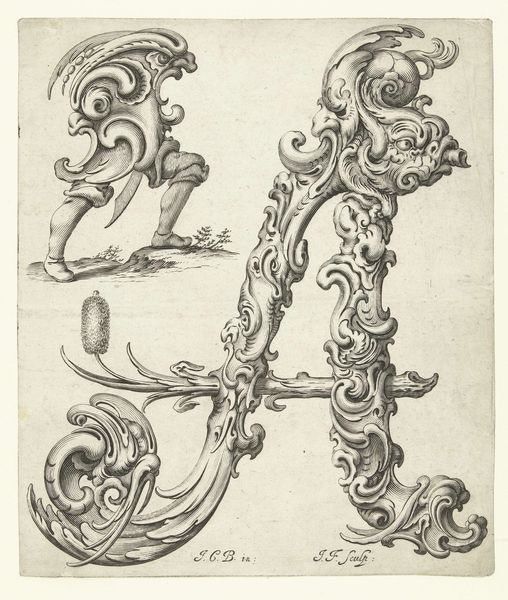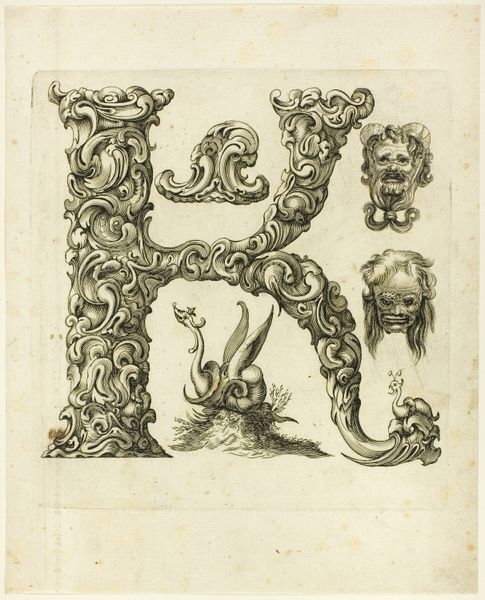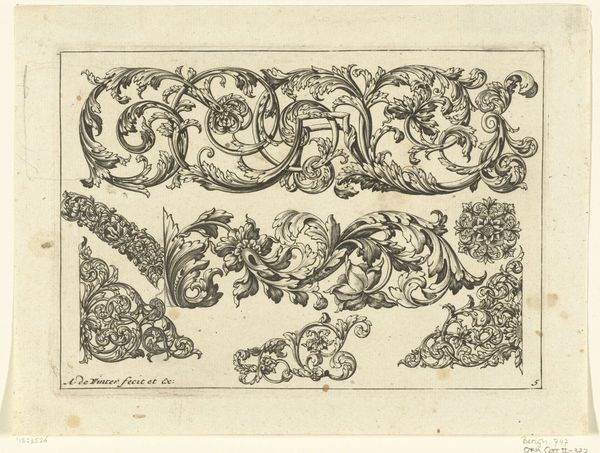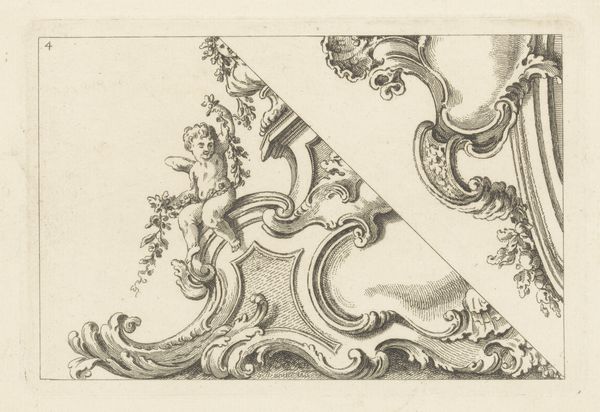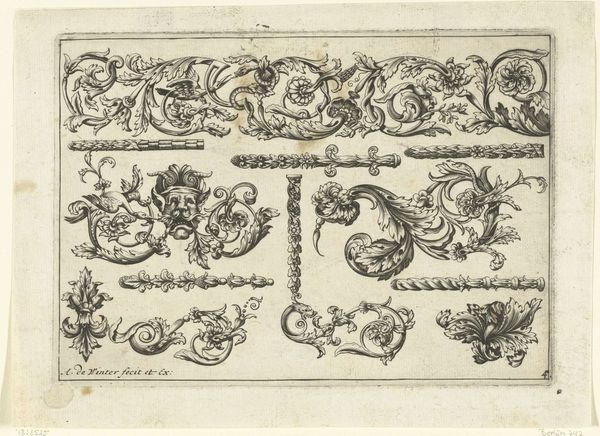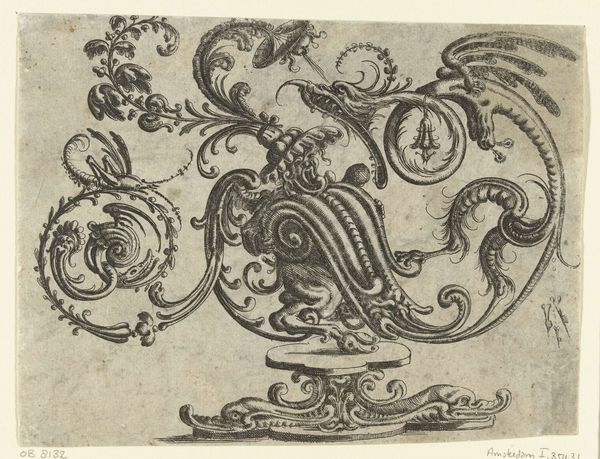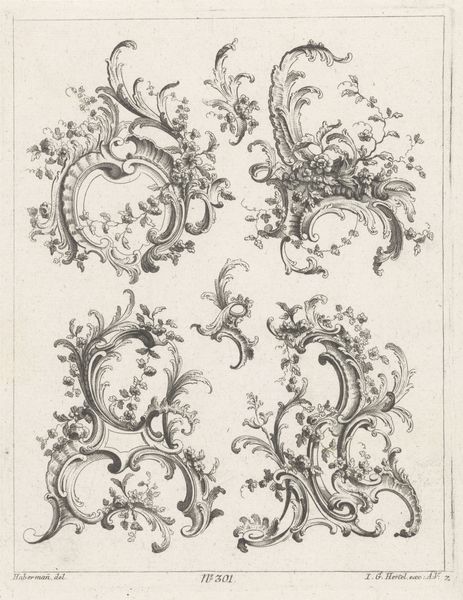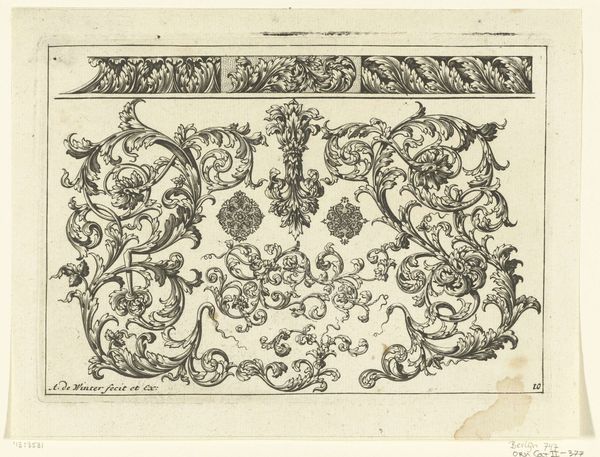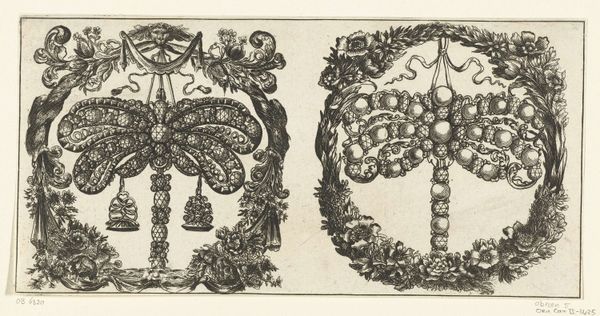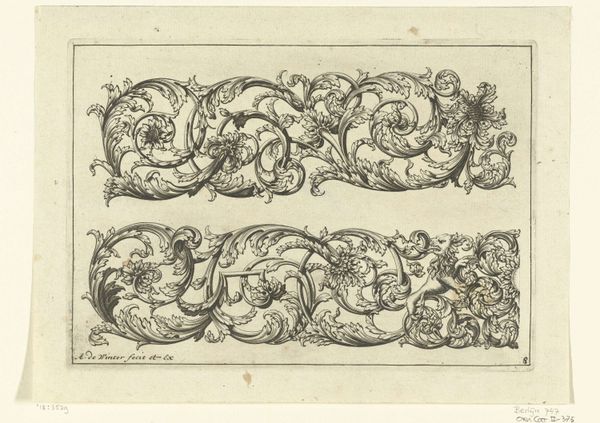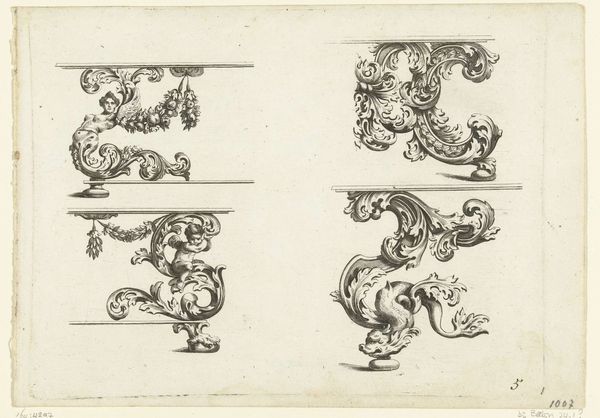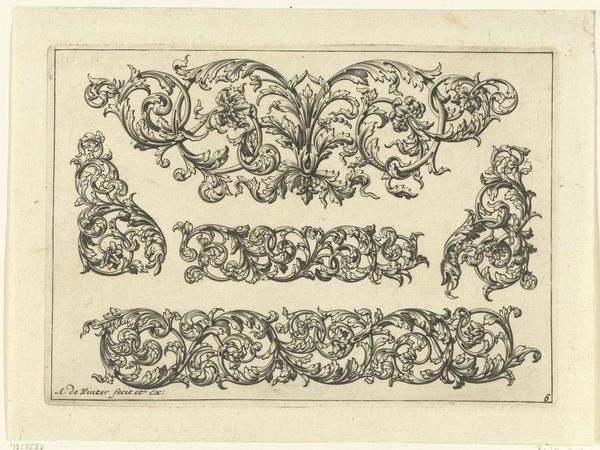
drawing, ink
#
drawing
#
baroque
#
form
#
ink
#
line
Dimensions: height 239 mm, width 179 mm
Copyright: Rijks Museum: Open Domain
Curator: Immediately I’m drawn to the detail—it's quite breathtaking! Editor: Absolutely. This piece, created between 1668 and 1708 by Susanne Maria von Sandrart, presents two rear carriage frame designs, rendered meticulously in ink. The style, clearly Baroque, leans into elaborate, almost theatrical forms. Curator: You see the theatricality too! The swirling foliage and cherubic figures practically dance across the page. Who were these designs for? What kind of carriage would sport something so ornate? It smacks of extreme privilege, doesn't it? Editor: Indubitably. Think of the workshops involved, the specialized labor transforming wood and metal to realize these extravagant concepts. The designs also blur the line between art and utility. The act of displaying wealth was as crucial as transporting one's self from point A to point B. The cherubs act to justify or legitimise such transport. Curator: Precisely! The inclusion of cherubs strikes me as a powerful symbol. Who is granted access, who is excluded? Carriages in those days meant significant power and prestige. Editor: Yes, consider also the function of the line in this work. Note the precise use of hatching and cross-hatching techniques to indicate shape and substance. What would the cost of labour be, the means for consumption during the construction? The artist shows a masterful handling of the media to create the design with little regard to time and material use during construction. Curator: Thinking of materials and techniques makes me consider von Sandrart's place as a woman artist during this era. Did she have access to the workshops or only to paper, ink, and the patron's drawings to make the designs on? Editor: Exactly, it’s about digging deeper, questioning whose stories and which hands have shaped these forms beyond pure aesthetics. Curator: Looking closer now, I keep coming back to how each detail reflects a deliberate construction of identity and status within Baroque society, all caught in these elegant, swirling lines. Editor: For me, viewing it through the lens of material history highlights the economic structure that enabled and underpinned its very creation, allowing artists like von Sandrart to practice their craft and social hierarchies to perpetuate.
Comments
No comments
Be the first to comment and join the conversation on the ultimate creative platform.
